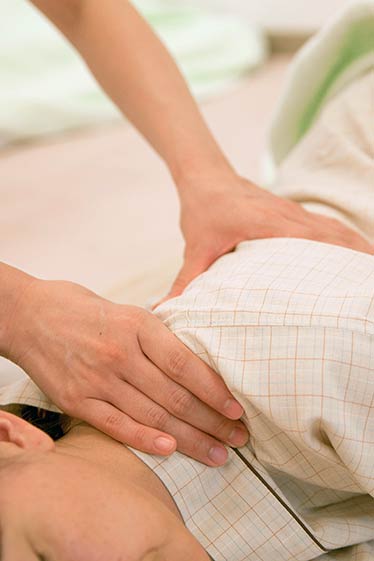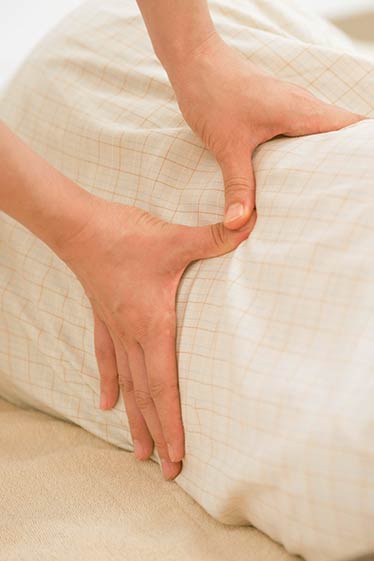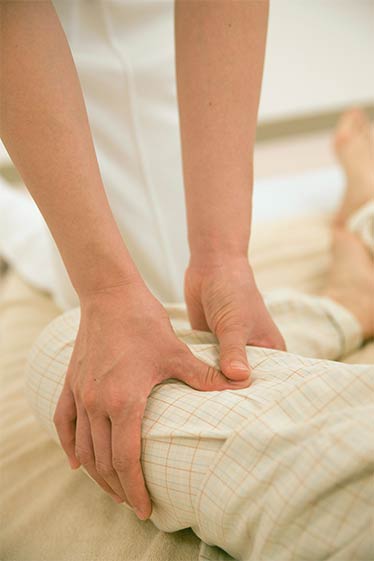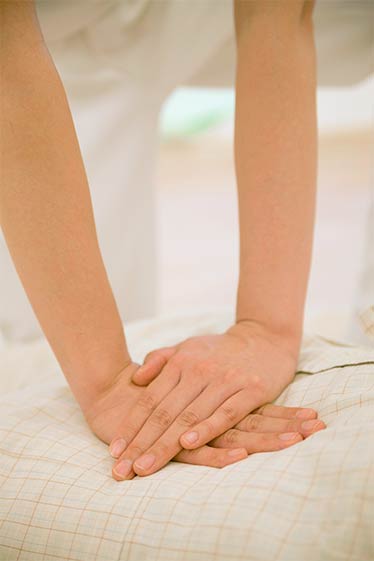Shiatsu, which originated in Japan, is a hands on method of preventive health care and therapy that increases vitality, relieves fatigue, and stimulates the body’s natural healing ability by applying pressure to key points on the body. In addition, it offers the warmth of a caring touch.
This is particularly important now when medical care has become so highly technical and specialized and when our hectic urban lives have so many sources of stress, all of which take a toll on our bodies and minds.
Even children often have busy schedules and may suffer from physical and mental fatigue. Many people are anxious about the adverse effects of modern life on their health.
There is no simple means to address their concerns, but Shiatsu offers a way to become aware of your body and to care for it... a way to take your health into your hands.
![]()



You can use Shiatsu on a daily basis to keep in touch with your own body. You don’t have to drag through your days with a host of minor complaints. You can improve your health, appearance, and physical fitness with patience and discipline.
Furthermore, you can practice Shiatsu with your friends and family, helping each other to a new physical awareness. Shiatsu is a wonderful way to give and receive care without words and to share a few pleasant, relaxed moments in a busy day.
![]()
When we are in pain, numb or sluggish, our instinctive response is to rub or press the area that bothers us. Even this simple action stimulates, to a degree, the natural functioning of the body systems.
Applied systematically, it will activate the body’s natural healing ability, and restore the troubled area to normal. Though the natural response would be to stretch, rub, or scratch a particular area, most people today are more apt to ignore their discomfort or to take a pill.
![]()
Shiatsu treatment consists of pressure applied with the balls of the thumbs and fingers and the palms of the hands to specific points on the surface of the body. Traditionally, these points have been called tsubo in Japanese. The tsubo on the body tend to accumulate fatigues and stress.
Pressing them brings relief, as our ancestors discovered instinctively. The ancient Chinese, through observation and experience, developed a system of diagnosis and treatment based on nearly seven hundred points on the body and the meridian lines of energy flow which connect them.
![]()
One important method of treatment was acupuncture, in which needles were inserted at points along the meridians to correct the energy flow. The knowledge came to Japan over one thousand years ago, and in the eighteenth century, practitioners of the traditional Japanese massage, or anma, incorporated this knowledge into their technique.
In the 1920’s, Tokujiro Namikoshi established Shiatsu as a therapeutic system integrated with modern anatomy and physiology, coining the word Shiatsu, literally “ finger pressure“, to describe his system.
![]()


The tsubo correspond to the muscles, bones, blood vessels, nerves, lymph vessels, and glands of the endocrine system that lie beneath them. Pressing these points are not only stimulates the skin and relieves muscular stiffness, but also regulates the nervous system, aids proper digestion, stimulates blood and lymph, and stimulates the body’s natural recuperative ability.
![]()
The essence of Shiatsu lies in the use of the hands for both diagnosis and treatment. The sensitive fingertips can distinguish differences in temperature and stiffness, both indicators of the condition of the body. The type, degree and duration of pressure is then adjusted to meet the specific needs of each area of the body and each individual.
Though the skills of a trained practitioner cannot be acquired overnight, this should not stop you from discovering for yourself how Shiatsu works and becoming better acquainted with the human body. By giving regular Shiatsu to yourself and others, you will grow sensitive to the needs of the body and begin to recognize the surface conditions signaling irregularities in the body.
![]()
The essence of Shiatsu lies not just in hands-on diagnosis and treatment, but in the warmth of a mother’ s touch. If the attitude of the giver of Shiatsu is both careful and caring, and the attitude of the receiver is open and receptive, the experience is sure to be beneficial for both.
We hope that Shiatsu will become an essential and enjoyable part of your daily life, that you will come to a deeper understanding of your body and its natural recuperative ability, and that Shiatsu will serve you as well as it has served so many others.
![]()

